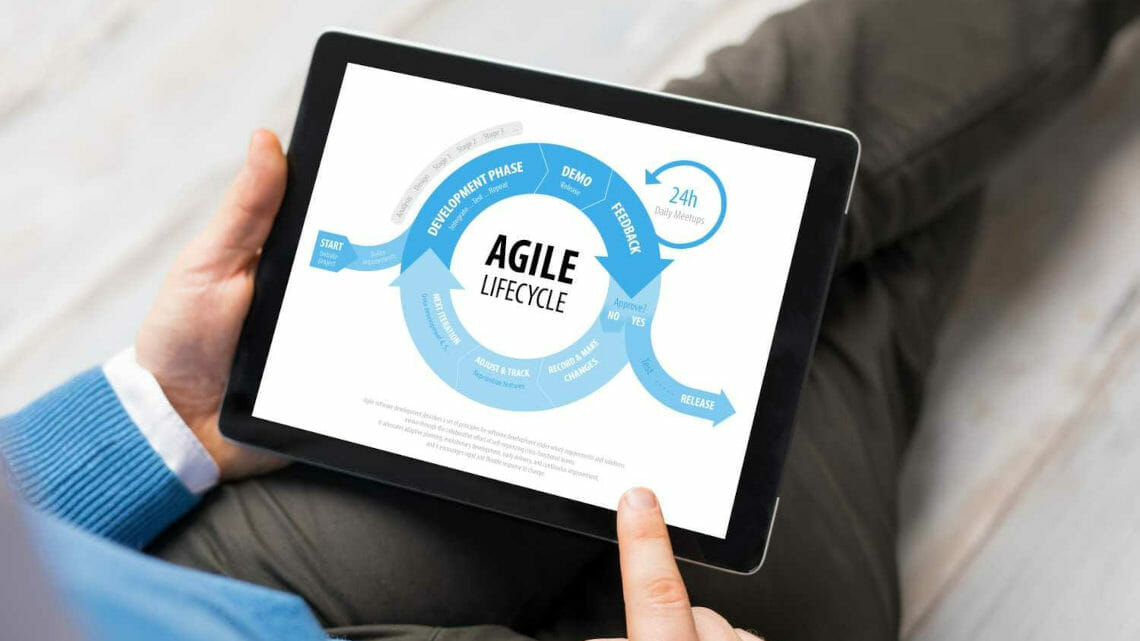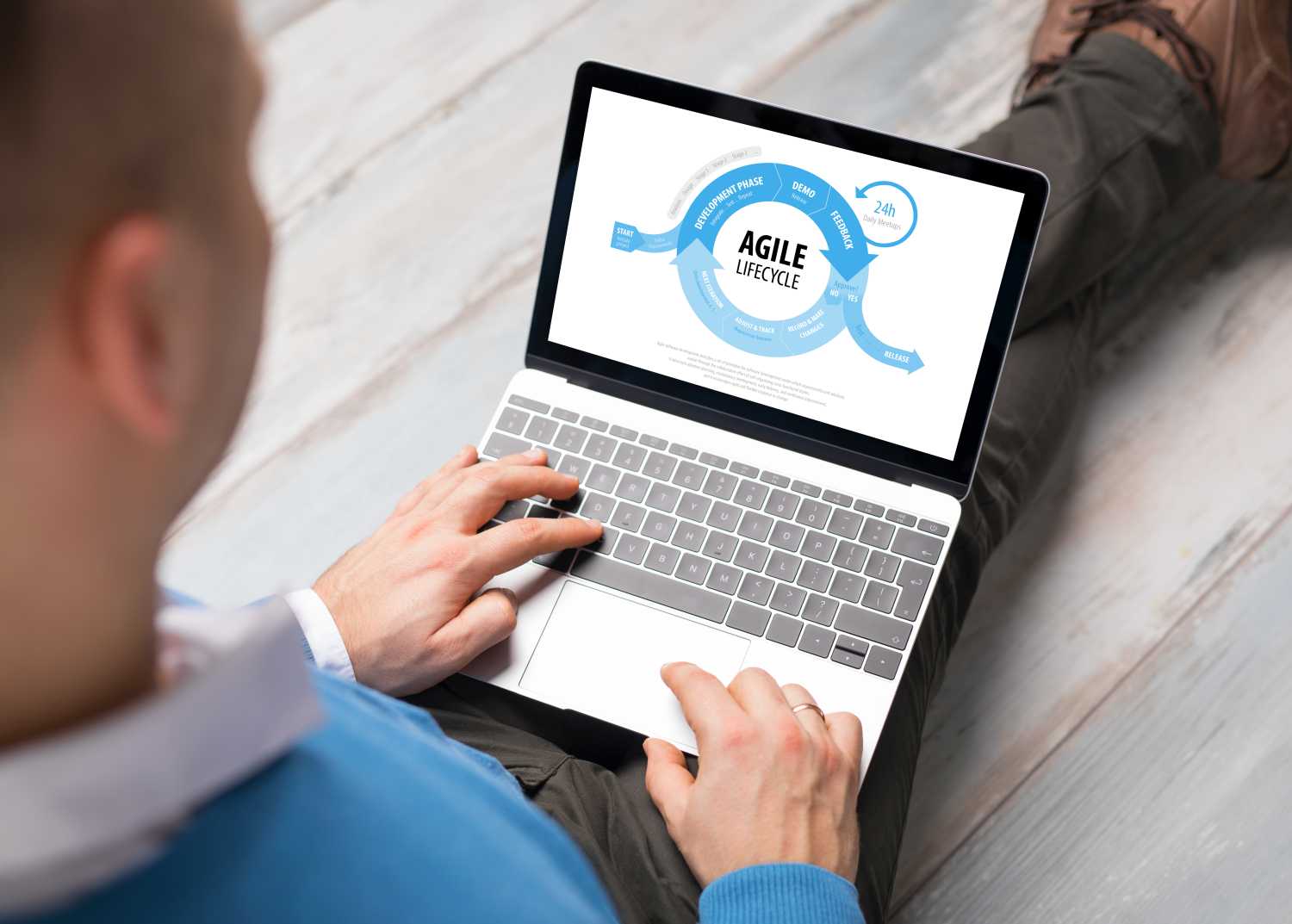
The 10 Best Agile Project Management Methods
Your company gets an order from a customer. Contracts are signed, everything is planned thoroughly, tasks are assigned, and work begins. Then your customer gets in touch. They want to change something – just add something there, leave out something elsewhere … Suddenly the plans you drew up so painstakingly are useless.
You need to change everything. This is going to mean a lot of work for you. Your employees are annoyed because they feel that their previous hard work has been for nothing. The customer is dissatisfied because now things are going to take longer and be more expensive – just because of “a few little changes”!
This scenario occurs pretty often with traditional management methods. The market, however, is demanding more and more flexibility and focus on the customer. There is only one thing to do: project management has to adapt to this trend, to become more agile – so here are some project management methods that you need to know about.

Exactly What Is Agile Project Management?
Agile project management is a buzzword in business because it promises efficient and committed teamwork and satisfied customers. But what does agile management actually mean? The word “agile” in a general sense means mobile, quick to react and full of energy. And this is precisely what these methods are aiming for within companies.
Work organization and structures can react faster and become more flexible and efficient. Processes and workflow can be simplified and optimized. It’s possible to deal with unforeseen events rather than them being a disaster. Employees have better motivation and commitment to their work, and customer satisfaction increases.
So how does it all actually work? Agile project management differs from traditional project management in a fundamental sense. In traditional management the end result and the process leading to it are determined at the beginning (the monolithic approach); agile management works in phases and adapts according to current results (an iterative-incremental approach).
There is usually an initial concept, but it allows room for variation and creativity. Errors can be detected quickly and adjustments or changes can be implemented more easily. Teams work on a mostly independent basis and organize themselves. Personal responsibility, reflection and improvement are important principles.
There are various project management methods for implementing these agile principles. In itself, however, agile management is not a method, but a set of principles and values. They are summarized in the so-called agile manifesto, formulated in 2001 by a group of renowned software developers. At its core, it is composed of four core values and twelve principles that can be applied to most fields of business.
The Four Core Values:
- Individuals and interactions are more important than processes and tools
- Functioning software is more important than comprehensive documentation
- Cooperation with the customer is more important than contract negotiations
- Reacting to change is more important than following a plan.

The Twelve Principles:
- Customer satisfaction has priority
- Changes are welcomed, and a flexible response to them is seen as a competitive advantage
- Results are presented regularly and within the shortest possible time span
- Agile teams are interdisciplinary and work directly together every day
- Team members should try to work in a motivated and self-organized manner and a suitable environment needs to be provided for this
- Personal communication is the basis of effective cooperation
- Success is measured by results
- A continuous pace of development is encouraged
- Good work requires skills that can be constantly improved
- Processes should be reduced to the essential
- Self-organization and personal responsibility lead to success
- Reflection and continuous improvement bring progress
How Agile Differs from Traditional Management:
- In agile management, goals and requirements are not precisely defined at the beginning.
- Changes and adjustments in the work process are not thought of as difficulties, but are allowed for and can therefore be dealt with more easily, because development processes are iterative and not sequential. They are not rigid, but aim at continuous improvement.
- Requirements are seen from the customer’s point of view and not from a technical perspective.
- While the customer has previously only been presented with the final result, in agile management they are involved in the development, receiving and reacting to interim results.
- Teams work cooperatively, organizing themselves and responsible for themselves. They do not receive tasks “from above”, but organize themselves independently. Hierarchies are flatter than in classical management, are omitted completely or are replaced by role models.
- Communication is regular, direct and informal, rather than through documents.
- Processes are streamlined rather than lengthened.
Of course, not all companies and fields are the same; traditional management also works. One size does not fit all.

10 Agile Project Management Methods Everyone Should Know
Agile project management methods are frameworks for implementing the values and principles, aiming to translate them into practice. There are a number of different approaches, suitable for different needs and requirements. Most of them are very flexible and they can be combined with each other. So you can find precisely the right road to agile management for your company.
Not all the project management methods below are specifically agile, but they can easily be applied and adapted to agile practice, and so are worth covering here.
1. Waterfall / Gantt planning (classic planning)
Waterfall or Gantt planning doesn’t really fall under agile project management, but is widely successful, very popular, and now often combined and supplemented with agile methods, so it’s worth mentioning here.
In a waterfall model, project work is planned from the very beginning and divided into several phases. These build on each other and follow a fixed sequence which should be followed carefully. Only when one stage has been completed does the work on the next begin. The process is therefore clearly defined and the entire process is planned before the project begins.
Such planning is usually visualized in the form of a bar chart, also called a Gantt chart.
Advantages and disadvantages:
+ security arising from comprehensive planning
+ orderly, comprehensible structure
– planning takes a lot of effort
– very rigid and inflexible in planning and execution
– planning errors often show up late and are then difficult to correct
– results usually only evident at the end
– if unexpected changes occur, major problems can arise
Application /flexibility:
Waterfall planning is especially useful in companies with hierarchical structures. In principle, it is well suited for extensive, predictable projects with unchanging requirements, i.e. without the need for adaptability.
Classic waterfall planning can however be combined well with agile methods. You can use it to organize the long-term planning, while dealing with the individual phases more flexibly by using elements from other methods.

2.Kanban
Kanban is a method first developed in Japan in the 1950s. Originally conceived as a method for improved coordination and control of production processes, David Anderson developed the idea further and created Kanban as an agile process optimization tool for software development, which is becoming increasingly popular in the wider field of project management.
This is probably because not only does it get great results, but it is uncomplicated and easy to implement. Kanban works in small, incremental steps, avoiding abrupt changeover measures. When working with Kanban, changes occur organically.
The central element in Kanban is the visualization of the task flow and the processes. This is done via the Kanban board (a tabular overview of the tasks and process steps and their respective status). There are at least three columns with moveable cards for tasks: one column for tasks to be completed, one for tasks in progress and one for completed tasks.
This division can be extended as required. The employees get their work from the pool of open tasks (the “pull system”) and the tasks move through the columns and are processed. The Kanban system is supplemented by defined principles that are intended to bring about motivation, a sense of responsibility and positive changes at all levels.
Advantages and disadvantages:
+ procedures and processes are transparent and manageable for everyone
+ ensures fluid workflow
+ easy implementation ensures good acceptance and little resistance in the team
+ flexible and intuitive
– Kanban board requires careful supervision to keep an overview
– may not provide enough structure for large teams or complex projects
Application/flexibility:
Kanban is very flexible, can be used almost everywhere without much preparation and is intuitively understood. It is suitable for projects and routine tasks and can be used in a team or by individuals for self-management. However, it can become confusing in very large teams.
Kanban is probably the most flexible project management method. It is easy to adapt to almost all situations and areas. Kanban also works well as a supplement to other methods.
3. Scrum
Scrum is a project management model that has its origins in software development, but is now also used in other areas. At first glance – especially in comparison with the clarity of Kanban – the Scrum model seems a bit complicated. In fact, it has a much more methodological foundation and follows a more complex scheme.
At the beginning there’s no fixed goal, but rather a “vision” of the result. Development is driven forward in work stages, the so-called sprints, which in turn consist of steps for consultation, processing, reflection and revision. A task board similar to Kanban is also used here, but it is usually more complex.
Furthermore, Scrum works with fixed roles (Product Owner, Scrum Master and Scrum Team). With Scrum, customer satisfaction is very much at the forefront.
Advantages and disadvantages:
+ flexible and open-ended process possible
+ very customer-oriented
+ high transparency and good coordination through a lot of communication
– lacks the security of forward planning
– the very iterative approach can be time-consuming
Application/flexibility:
Scrum is not as easy to implement as Kanban and is associated with a little more risk and potential for conflict, especially where a company has a rigid hierarchical structure. It is therefore not right for every company. For small teams and routine projects or routine tasks, less complex methods are also more suitable. Due to its overarching focus on the customer, Scrum is particularly suited to areas where customer satisfaction is paramount.
Scrum provides relatively clear structures, but is still reasonably adaptable. It combines very well with Kanban (as the next method will show).

4. Scrumban
As the name suggests, Scrumban is a combination of Kanban and Scrum. Elements of both methods are combined to maximize the advantages of both. The sprints and team arrangements come from Scrum, and the idea of improvement, which is intended to strengthen processes and cooperation, from Kanban. Scrumban therefore has more structural underpinning than Kanban alone, but allows for much more flexibility.
Advantages and disadvantages:
+ flexible, open-ended approach with good workflow
+ transparent processes, intensive communication and the idea of personal responsibility have a lasting effect
+ More versatile than Scrum or Kanban alone
– may initially cause confusion in teams without agile experience, as rules and responsibilities are harder to define
Application/flexibility:
Scrumban offers more structure than Kanban alone, meaning that it’s suitable for more complex projects. It is particularly effective for customer-centric projects that need to be handled flexibly. Scrumban excels in situations where people already work with Scrum or Kanban.
5. Lean Project Management
Lean project management is based on the principles of lean management, which has been popular for several decades, while at the same time being broadly in line with agile principles. The focus is on streamlining processes and customer satisfaction, while and at the same time creating the greatest possible value and avoiding any waste. Lean project management is less a concrete methodology than a collection of strategic principles.
There are a number of tools which support lean project management, for example the Ishikawa diagram, the 5S method or the Gemba principles. The idea is that pull instead of push methods are used to implement a flow principle.
Since lean project management is not set in stone, tools from other methods can be usefully combined in practice. It can therefore be seen as a link between the traditional approach and agile methods.
Advantages and disadvantages:
+ can act as a link in the transition from traditional to agile management
+/- successful implementation requires fundamental rethinking
– actual application must be developed individually for each company
Application/flexibility:
The lean management concept aims at fundamental restructuring rather than individual project work. It therefore offers few concrete starting points for application to individual projects.
Combining lean management with tools from other methods is not only possible, but often necessary due to the lack of practical guidance.

6. PRINCE2
PRINCE2 (“Projects IN Controlled Environments”) is a process-based system for project management which was developed by the British company Axelos Ltd. PRINCE2 works with clearly defined phases and processes, providing concrete instructions for project implementation. Roles and responsibilities are also clearly defined.
The method has a very entrepreneurial outlook, and places a lot of emphasis on reviewing project progress and cost-benefit analyses.
Advantages and disadvantages:
+ clarity from predefined structures and roles
+ widely applicable
– less flexible than other methods
– requires certified training protected by copyright, but can be used royalty-free
Application/flexibility:
PRINCE was originally a standard tool in the IT sector, but with PRINCE2 it has been developed into a widespread project- and industry-neutral model, used across the world by both the private sector and public authorities. It is particularly suitable where a high level of structure, control and quality assurance is required. Since it is based on very concrete and self-sustaining guidelines, it is very difficult to combine with any other method.
Extreme Programming (XP; not related to the operating system of the same name)
Extreme programming is a method of software development. It is primarily a cyclical approach which is applied to every step of the development process. Each step is carried out as far as possible in a certain cycle: pair programming every second, checking every minute, integration every hour, meetings every day, iterations every week and ideally releases every month. The requirements are defined together with the customer within the cycles and are therefore not predetermined from the beginning (“agile modelling”).
Advantages and disadvantages:
+ very fast process progress and reduced time expenditure due to short cycles
+ works promptly, accurately, problem-oriented and open to changes
+ active customer integration
– methodically limited to software development
Application/flexibility:
So far, XP is a pure IT tool. The timing can only be transferred to other areas to a limited extent.
Integrating elements of other methods, such as a Kanban board, is possible within the clocking framework.
8. PMI’s PMBOK
The PMBOK (Project Management Body of Knowledge) Guide is published by the Project Management Institute (PMI). The PMI is an internationally active project-management association based in the USA.
With the PMBOK guidelines, the institute has been providing a comprehensive framework for project management since 1987. It defines both the tasks and the procedures of project management.
The PMBOK identifies five process groups (initiating, planning, executing, monitoring & controlling, and closing) and ten knowledge areas (integration management, scope management, schedule management, cost management, quality management, resource management, communications management, risk management, procurement management, and stakeholder management).
These are linked within a matrix to form processes and process groups. These in turn are linked to values, methods and tools. The choice of which contents and tools from the PMBOK are applied to a particular project depends on the circumstances.
The framework is supplemented by an ethical code that demands responsibility, respect, fairness and honesty.
Advantages and disadvantages:
+ very comprehensive guide with flexible, needs-based application
+ applicable independent of industry and project
-relatively complex framework
Application/flexibility:
The PMBOK can be used almost everywhere, but requires expert development of an individual project strategy from the given matrix.
The methods and tools are extensive, and you can also combine them with other methods.
9. Six Sigma (6σ)
Six Sigma is not just a method for improving processes; it also covers quality management. The unique thing is that Six Sigma follows a mathematical approach. The 6σ method is based on the idea that business processes can also be expressed as mathematical functions.
Statistical analyses are used to search for deviations in order to achieve optimisation. (The Greek letter σ in math is the symbol for deviation from the mean value). Six Sigma is therefore focuses on improvement in the long term.
Project structure using Six Sigma follows a fixed scheme: Define, Measure, Analyze, Improve, Control (DMAIC). In addition, there is a comprehensive set of application tools (7×7 toolbox) to implement the scheme in practice.
The method provides for a hierarchical distribution of roles during project processing. These roles are named and subdivided according to Asian martial arts ranks (e.g. independent project managers = Six Sigma Black Belts).
Advantages and disadvantages:
+ Performance targets are clearly visible
+/- the aim is long-term, sustainable optimization; there is less benefit for individual projects
– Creativity and flexibility can suffer from the rigid quality concept
Application/flexibility:
Although Six Sigma can in principle be used across industries, it doesn’t suit every sector, because it works best where processes and results tend to be standardized in the long term (e.g. in manufacturing) and creative deviations are not part of the objective. However, it’s possible to customize processes and tools to “soften” the method, up to a point.
10. Design Thinking
Design thinking is a process that has been developed to optimize creative ideas and solutions. These need to be fundamentally oriented to the needs of the user or customer. What’s more, the result has to be technically feasible and economically viable.
The method recommends multidisciplinary, diverse teams and conditions that suit the creative process. The process of design thinking itself takes place in iterative loops consisting of the components of understanding (grasping the challenge), observing (research), empathizing (putting yourself in the user’s shoes), brainstorming, prototyping and refinement. Particular emphasis is placed on early prototyping and regular recapitulation.
Advantages and disadvantages:
+ strongly oriented towards user needs
+ easy to understand and very open approach
+ promotes a positive error culture
+ progress can be easily tracked by prototypes
– lack of planning can lead to uncertainty
– only useful for certain areas of application, limited team size
Application/flexibility:
Design thinking is particularly suitable where creativity is required. In other areas it makes little sense. Personal, open interaction is a fundamental aspect, so larger teams are unsuitable (5-8 people are recommended). Other methods do not normally fit well with the design thinking process.

Other Methods
In addition to these ten particularly popular methods, there are several other approaches worth mentioning. They are mostly used in software development, but for the sake of completeness, here’s a brief overview:
- Unified Process: highly iterative software development process
- Agile Enterprise/Enterprise Agility: transfers agile principles from the team level to other levels of the company
- FDD (Feature Driven Development): Process model for software development
- RAD (Rapid Application Development): cyclical software development process with rapid prototyping as a goal
- AMDD (Agile Model Driven Development: agile variant of Model Driven Development
- DSDM (Dynamic Systems Development Method): increasingly includes business management aspects in project management

Agile Project Management Methods: Spoilt for Choice?
Having touched briefly on such different methods, the obvious question arises: which one is the best? As you can guess, there’s no “right” answer. Circumstances differ widely between industries, companies, teams, and even individual projects. So everyone has to find their own way – and agile project management is great in this respect, as you can modify, combine, try out and discard different methods. Trial and error is totally worth it, because valuable and enriching insight can blossom even from relatively unsuccessful experiences.
Forward-looking companies are thinking outside the box and embracing agile project management – why not give it a go?




